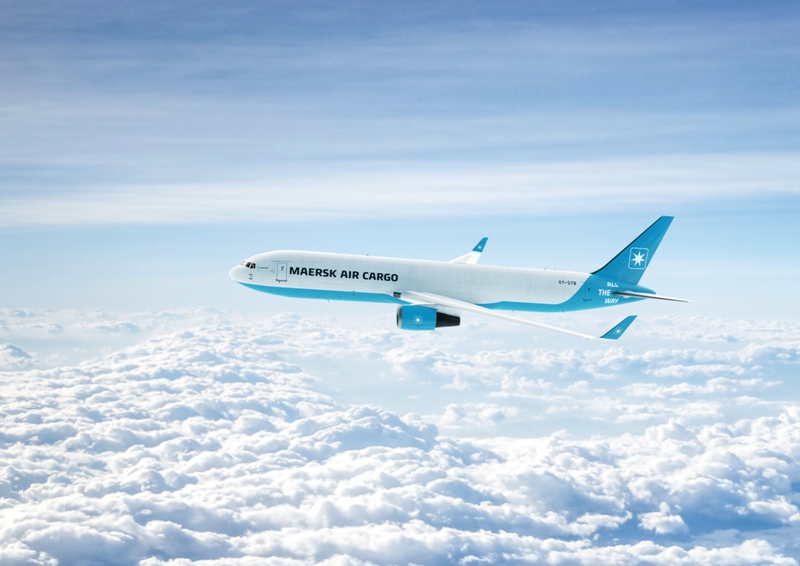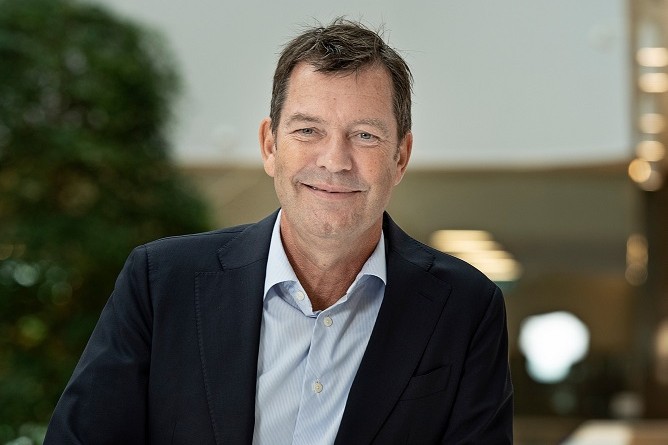Nordic air cargo market weathers turbulence
04 / 05 / 2022

Maersk Air Cargo will initially launch with three B767Fs. Photo: Maersk
Challenges created by ongoing reduced airfreight capacity and Ukraine war constraints have seen the Nordic air cargo market continue to invest and innovate to meet new challenges, writes Damian Brett.
Times have been turbulent for the Nordic air cargo market over the last couple of years.
Like much of the industry, companies from Denmark, Sweden, Norway, Finland and Iceland had to contend with a lack of air cargo capacity due to the huge reduction in the number of passenger flights as a result of Covid.
However, as last year wore on there was hope that the market could be settling into a new normal as lockdown restrictions were being lifted and bellyhold operations were beginning to return.
That hope was turned on its head in late February when Russian tanks entered Ukraine and tit for tat sanctions affecting aviation were issued by western countries and Russia.
Probably the most relevant to the Nordic air cargo market was Russia’s ban on using its airspace.
Speaking at the Nordic Air Cargo Symposium, Accenture’s Seabury Cargo commercial director Jonathan Mellink said that between March 7 and 20 the Nordics’ international air cargo capacity slipped 20% behind the equivalent 2019 level as a result of airlines rerouting and cancelling flights as a result of the sanctions.
This was around 5 percentage points down on the level recorded in January and February.
One company facing this challenge was Finnair. Fredrik Wildtgrube, vice president Finnair Cargo, says: “We have now routed the flights to avoid Russian airspace, using either the southern or northern route.
“Finnair used the Polar route back in the 1980s and we quickly created alternative route solutions for our customers shipping to and from Japan and South Korea.”
At the time of writing, the carrier was flying to Narita four times a week with a flight time of 13 hours instead of the previous 9.5-10 hours.
The carrier also flies to Shanghai once a week and Seoul three time per week with a flight time of 12-14 hours.
However, flights between Helsinki and Osaka and Hong Kong were cancelled in April as flying them with a longer routing is not currently possible.
The longer routing also has an impact on costs as the carrier needs to take account of more fuel burn, changes to the number of crew and their working hours.
Henrik Nielsen, executive vice president, DSV Air & Sea, Nordics, points to the forwarder’s latest operational update when asked how the war was affecting its business.
DSV says it is monitoring the situation closely, providing solutions where possible to minimise the impact on customer supply chains.
All DSV operations in Ukraine remain suspended.
Furthermore, DSV continues its temporary suspension of all air, sea, road and rail shipments to and from Russia and Belarus. The only exception to this is the transport of medical and humanitarian supplies.

Henrik Nielsen, executive vice president, DSV Air & Sea, Nordics. Photo: DSV
Ongoing challenges
Wildtgrube says that Finnair also continues to be affected by the pandemic, including the various restrictions put in place by various countries.
“The logistics industry also suffers from lack of truck drivers but we have good partners who have been able to provide road feeder service for us in a steady fashion,” he adds.
“With modern tools and processes in place we are pleased to offer our customers safe and smooth transit traffic through the Nordics.”
Despite these challenges, 2021 was a record year for Finnair Cargo, with revenues growing by 88.3% compared with 2020 to €334.7m as it carried 105,014 tons of freight.
Cargo demand has continued to improve in January and February.
“Last year our Asian routes, particularly to/from Japan and South Korea performed very well. We operated both cargo-only flights, including cabin loading and charters in addition to our existing passenger network,” Wildtgrube says.
“Our new Stockholm Arlanda hub was very well received by customers and in January 2021 we were the biggest air cargo carrier in Sweden, according to IATA statistics.”
He adds: “In times like these collaboration between the parties involved in supply chains is critical. The same goes for acting quickly and looking for solutions as early as possible since capacities are limited and the rising energy costs create new situations for the logistics.”
DSV’s Nielsen says that the company has seen high demand both to and from the Nordic region over recent months and this trend is expected to continue.
“The Nordic region is doing well. Both Sweden, Norway and Denmark have been and are doing very well,” says Nielsen.
“There is a big salmon export out of Norway and a lot of industrial goods out of Sweden and Denmark.”
From a freight forwarder’s perspective, finding air cargo capacity is a challenge, but Nielsen says the company has a good dialogue with both customers and airlines.
DSV also has access to a full and part-charter network operated via Luxembourg and Belgium.
Looking at demand, Mellink says that Seabury Cargo figures show that in 2021 Nordic air cargo exports increased by 1% compared with 2019 and totalled 649,000 tonnes, while imports increased by 16% on 2019 to 308,000 tonnes.
On air cargo imports into the Nordics over that two-year time frame, Seabury Cargo figures show that Sweden registered a 22% increase in air cargo volumes to 96,000 tonnes, Norway a 9% growth to 87,000 tonnes, there was a 25% improvement to Denmark at 76,000 tonnes, Finland was up 26% to 34,000 tonnes and Iceland reported a fall of 21% to 15,000 tonnes.
Air cargo exports from Norway were up by 8% to 283,000 tonnes, while from Denmark they were up 5% to 140,000 tonnes. From Sweden they were down 10% to 129,000 tonnes, meanwhile Finland reported a 13% drop to 60,000 tonnes and Iceland was flat at 37,000 tonnes.
On the commodities exported by air, Mellink said that fresh fish exports – in particular salmon from Norway – are becoming increasingly important.
Fresh fish exports reached record levels last year, accounting for 42% of total Nordic exports, up from 14% in 2000 and 35% in 2015.
The continued success story of Norwegian salmon exports has also resulted in the restart of a project to build a seafood terminal at Oslo Airport.
Earlier this year, Oslo Seafood & Cargo Center (OSCC) agreed a deal with Oslo airport operator Avinor to operate the facility which is due to open in the second half of 2023.
The new cooled facility will have airside and roadside access and will measure 4,200 sq m. The direct airside access and temperature controlled environment will help reduce the amount of ice used to keep produce cool which will help reduce the environmental footprint per kilo of seafood transported, says Martin Langaas, Avinor’s airfreight manager.
It is not the first time a seafood terminal has been under development at the airport; in 2019, handler Worldwide Flight Services (WFS) and Avinor terminated a deal for the construction and operation of a seafood terminal.
The reasons for the deal being cancelled were not immediately clear, although the state-owned airport operator indicated that the ground handler had wanted to make changes to the letter of intent.
Investing in the Nordics
Other companies in the Nordic region are also investing in air cargo. Copenhagen-headquartered shipping giant AP Moller Maersk plans to launch its own cargo airline next year.
Maersk Air Cargo will initially launch with three B767Fs before adding two B777Fs in 2024.
The new carrier will use Billund Airport as its main hub and on the back of the development, the airport says it hopes to double airfreight volumes to 160,000 tonnes per year by 2040.
As part of the growth efforts, the airport is partnering with Danish pension company PensionDanmark on the development of infrastructure such as hangars and logistics facilities.
Elsewhere, Icelandic ACMI company Bluebird Nordic has been expanding its freighter fleet.
In February, Bluebird Nordic took delivery of a second B737-800 Boeing Converted Freighter (BCF) from AviaAM and the company plans to add widebody capacity through the lease of three B777 freighters that are due to undergo conversion in 2024.
The carrier currently operates with a fleet of seven B737-400s, one B737-300 and two B737-800 cargo aircraft.
Air cargo companies in the Nordic region are also investing in digital technology as they look to create efficiencies.
Wildtgrube says that Finnair’s online booking portal is now available in 22 countries and its use in Asia is continuing to be ramped up. The airline also offers its capacity on third-party portals.

Fredrik Wildtgrube, vice president of Finnair Cargo, says the company’s flights have been rerouted. Photo: Finnair
He adds that Finnair has been at the forefront of pushing IATA’s ONE Record project, which aims to centralise shipment data to improve access across the supply chain.
“Digital tools contribute to improved communication capabilities, which can create benefit for the business and also the environment around us,” says Wildtgrube.
“Beyond the removal of paperwork (i.e. physical AWBs and other documents) from the supply chain, digitalisation can improve the collaboration between the parties across the value chain and support the avoidance of supply chain disruption as well as unwise usage of resources.”
Another company investing in digitalisation is SAS Cargo, says chief executive Max Knagge.
SAS Cargo recently rolled out Unisys’ Cargo Portal, which features dynamic pricing for cargo, and enables e-bookings and tracking for its customers in over 100 countries.
“We are heavily investing in digital solutions, to find solutions that build a competitive advantage – how can we use tools and capabilities to help our customers and by doing so take a strong market position?” he asks.
Knagge adds that data can also improve operational efficiency, for example by making sure aircraft are used in the most efficient way.
The environment is another areas of focus for companies in the Nordic air cargo sector.
Knagge says that the company has been investing in more efficient aircraft and the use of sustainable aviation fuel (SAF).
The company has also launched a partnership with Airbus to explore the development of electric aircraft.
By 2025 the airline aims to have reduced CO2 emissions by 25% compared with 2005 and by 2050 it hopes to have achieved a 50% reduction.
Wildtgrube says sustainability is becoming increasingly important to customers: “Sustainability topics are increasingly discussed with customers and we strive to offer the most sustainable solutions to them.
“Sustainable aviation fuel (SAF) is beginning to be of interest to more and more customers, and we are creating solutions to cater for such requests. Naturally we also continue our internal sustainability efforts, also in terms of circular economy actions.”
When will air cargo’s supply-demand balance return to pre-Covid levels?














